
Adrianna Gruszka - a graduate of industrial design at the School of Form (SWPS University). She gained her professional experience at Zieta Studio, and in 2023, she joined Maciej Siuda Pracownia. In her design work, she focuses on exploring materials and their potential uses, working with uncertainty, and experimenting with new forms of (non)decision-making.
 Aleksandra Linkiewicz - this year's graduate of domestic design at the School of Form (SWPS University). Professionally, she works in computer graphics and new media. In her analogue works, she focuses on animals and senses, placing great emphasis on the materials she uses. When working, she tries to look at the world from the perspective of a person she is designing for. Her thesis, ‘Temporary shelter for animals in emergency situations’, highlights the challenges faced by pets and their owners in today's world.
Aleksandra Linkiewicz - this year's graduate of domestic design at the School of Form (SWPS University). Professionally, she works in computer graphics and new media. In her analogue works, she focuses on animals and senses, placing great emphasis on the materials she uses. When working, she tries to look at the world from the perspective of a person she is designing for. Her thesis, ‘Temporary shelter for animals in emergency situations’, highlights the challenges faced by pets and their owners in today's world.
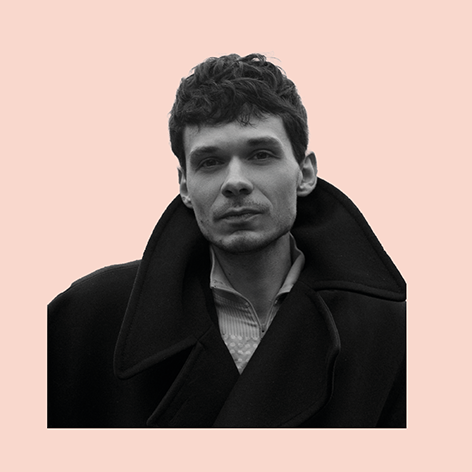 Bartosz Brylewski - a design artist, exhibition curator, and author of educational programmes that combine design with knowledge about materials and the environment. He graduated in industrial design at the School of Form (SWPS University). Since 2020, he has been developing his own design practice and cooperating with companies and institutions of culture, science, and art, including BWA Wrocław, the Institute of Design in Kielce, SWPS University, and the Museum of the Earth of the Polish Academy of Sciences.
Bartosz Brylewski - a design artist, exhibition curator, and author of educational programmes that combine design with knowledge about materials and the environment. He graduated in industrial design at the School of Form (SWPS University). Since 2020, he has been developing his own design practice and cooperating with companies and institutions of culture, science, and art, including BWA Wrocław, the Institute of Design in Kielce, SWPS University, and the Museum of the Earth of the Polish Academy of Sciences.
In 2023, he founded his own design studio, BART BRYLEW STUDIO, focusing on original works made from ceramics and glass. He also works as a consultant and designs products for external companies.
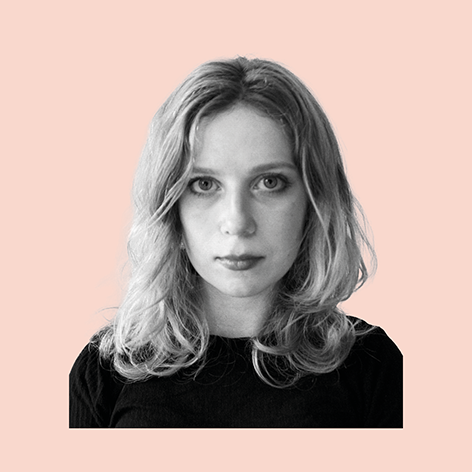 Dobromiła Grabiec - a graduate of industrial design at the School of Form (SWPS University). She currently works at Anna Bera Studio. She creates speculative, research-based works that are deeply sensitive to the surrounding world. She is interested in natural design, interspecies collaboration, traditional craftsmanship, and sentimentality. Her works have been presented at Polish and international exhibitions, including Vienna Design Week and Gdynia Design Days.
Dobromiła Grabiec - a graduate of industrial design at the School of Form (SWPS University). She currently works at Anna Bera Studio. She creates speculative, research-based works that are deeply sensitive to the surrounding world. She is interested in natural design, interspecies collaboration, traditional craftsmanship, and sentimentality. Her works have been presented at Polish and international exhibitions, including Vienna Design Week and Gdynia Design Days.
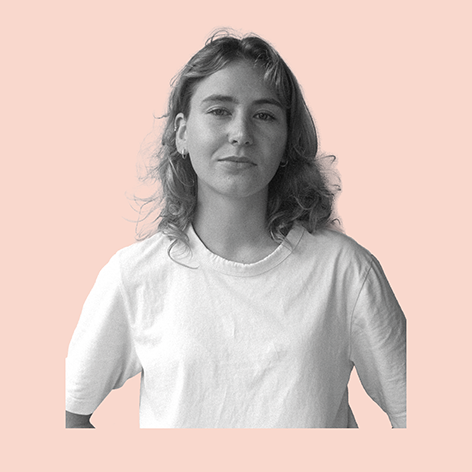 Julia Karnaś - a graduate of industrial design at the School of Form (SWPS University). In her work, she combines the challenges of climate change with social aspects. During a semester abroad in Iceland, she became interested in the radicalisation of materials in design and architecture. She is fascinated by modern digital techniques, process optimisation in design, and working with matter. Her works have been showcased at exhibitions such as ‘Nowa Generacja’ at Gdynia Design Days, ‘Laboratorium Współczesności’, and she was also a finalist in the ‘make me!’ competition at the Łódź Design Festival. After completing her bachelor's degree, she began working in Porto, where she continued her research on embodied and operational carbon.
Julia Karnaś - a graduate of industrial design at the School of Form (SWPS University). In her work, she combines the challenges of climate change with social aspects. During a semester abroad in Iceland, she became interested in the radicalisation of materials in design and architecture. She is fascinated by modern digital techniques, process optimisation in design, and working with matter. Her works have been showcased at exhibitions such as ‘Nowa Generacja’ at Gdynia Design Days, ‘Laboratorium Współczesności’, and she was also a finalist in the ‘make me!’ competition at the Łódź Design Festival. After completing her bachelor's degree, she began working in Porto, where she continued her research on embodied and operational carbon.
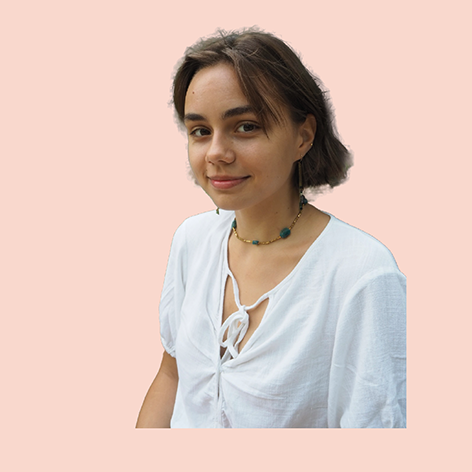 Justyna Parjaszewska - a graduate of the Faculty of Design at the School of Form (SWPS University). She has begun her master's studies at the IED Istituto Europeo di Design in the jewellery department. For her, creative processes are not only a challenge but, above all, an inspiring journey. Sensitivity to spaces and the unique properties of materials are key elements of her creativity. She dives into the world of forms, textures, and colours to create designs that are not only an aesthetic reflection of her impressions, but also show a deep understanding and respect for the world around us.
Justyna Parjaszewska - a graduate of the Faculty of Design at the School of Form (SWPS University). She has begun her master's studies at the IED Istituto Europeo di Design in the jewellery department. For her, creative processes are not only a challenge but, above all, an inspiring journey. Sensitivity to spaces and the unique properties of materials are key elements of her creativity. She dives into the world of forms, textures, and colours to create designs that are not only an aesthetic reflection of her impressions, but also show a deep understanding and respect for the world around us.
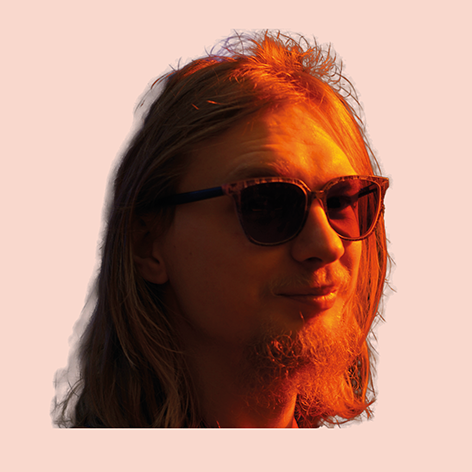 Sergey Moskalev - a designer, craftsman, and experimenter. He works in Poznań, and creates bicycles under the Volna Bicycles brand. With experience in graphic and industrial design, he creates his own products, restores vintage American bicycles, and experiments in the fields of modern design and technology. Through well-designed objects and processes, he combines proven technical solutions and traditional aesthetics with a modern approach to finding balance and sustainability in life. He opts for actions aligned with the ideology of slow living, being eco-friendly, and taking creative approaches.
Sergey Moskalev - a designer, craftsman, and experimenter. He works in Poznań, and creates bicycles under the Volna Bicycles brand. With experience in graphic and industrial design, he creates his own products, restores vintage American bicycles, and experiments in the fields of modern design and technology. Through well-designed objects and processes, he combines proven technical solutions and traditional aesthetics with a modern approach to finding balance and sustainability in life. He opts for actions aligned with the ideology of slow living, being eco-friendly, and taking creative approaches.
 Stefan Lazar - he gained his professional experience at the Faculty of Graphic Design at the College of Art in Ukraine, followed by the domestic/industrial design course at the School of Form (SWPS University). His works were presented at the Łódź Design Days and Gdynia Design Days (The OPO Project). For the last 5 years, he has realised innovative projects for clients and led the technical team in the Lab150 prototyping room. Working with Paweł Buszko, he designs products from their concept to market launch. With his technical experience, his design projects incorporate technological and manufacturing aspects, combining functionality with simple forms.
Stefan Lazar - he gained his professional experience at the Faculty of Graphic Design at the College of Art in Ukraine, followed by the domestic/industrial design course at the School of Form (SWPS University). His works were presented at the Łódź Design Days and Gdynia Design Days (The OPO Project). For the last 5 years, he has realised innovative projects for clients and led the technical team in the Lab150 prototyping room. Working with Paweł Buszko, he designs products from their concept to market launch. With his technical experience, his design projects incorporate technological and manufacturing aspects, combining functionality with simple forms.
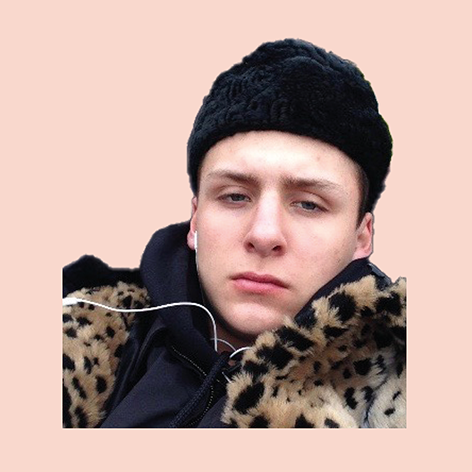 Wit Kacper Bojar - a graduate in design at the School of Form (SWPS University). He specialises in working with porcelain, clay, and wood. His creations are inspired by the deep relationship between humans and nature, which is reflected in his unique projects that combine aesthetics with functionality. He is also passionate about cooking, which can be seen in the unique everyday objects he designs that reference culinary themes. He is constantly looking for new forms of expression and explores a variety of materials and techniques to create pieces that harmonise with the surrounding world.
Wit Kacper Bojar - a graduate in design at the School of Form (SWPS University). He specialises in working with porcelain, clay, and wood. His creations are inspired by the deep relationship between humans and nature, which is reflected in his unique projects that combine aesthetics with functionality. He is also passionate about cooking, which can be seen in the unique everyday objects he designs that reference culinary themes. He is constantly looking for new forms of expression and explores a variety of materials and techniques to create pieces that harmonise with the surrounding world.
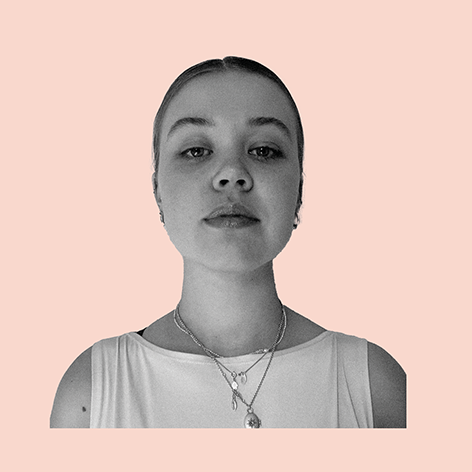 Zofia Zdanowicz - a visual artist and a graduate in design at the School of Form (SWPS University). She utilises various media, specialising in porcelain, clay, dyeing, fabric, and wood. Her works focus on themes related to the relationship between humans and nature, emotions, human memory, handcraft, and craftsmanship. By analysing the impact of objects and designed spaces on the viewer, she explores the connections between form and meaning. Combining different means of expression allows her to create works that are a personal expression of the artist, harmonising form and content, while encouraging interaction and reflection.
Zofia Zdanowicz - a visual artist and a graduate in design at the School of Form (SWPS University). She utilises various media, specialising in porcelain, clay, dyeing, fabric, and wood. Her works focus on themes related to the relationship between humans and nature, emotions, human memory, handcraft, and craftsmanship. By analysing the impact of objects and designed spaces on the viewer, she explores the connections between form and meaning. Combining different means of expression allows her to create works that are a personal expression of the artist, harmonising form and content, while encouraging interaction and reflection.
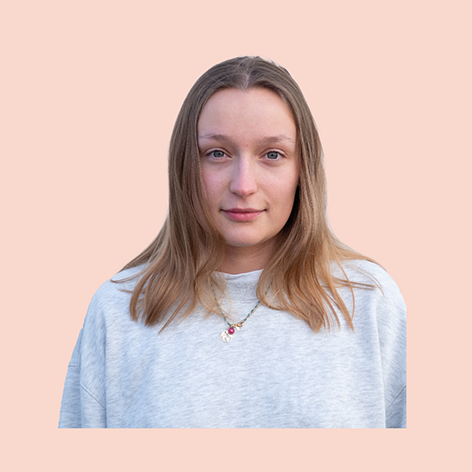 Zuzanna Hofman - graduated with distinction in design at the School of Form (SWPS University). During her studies, she worked at the MUAS ceramics workshop. She has participated in many exhibitions, including Łódź Design Days, Gdynia Design Week, and Vienna Design Week. In her designs, she is most interested in working with nature. She creates sustainable works that support climate protection and aims to teach people sensitivity and respect for the natural world around us. Her passion is travelling, and it is during travel that she gets most of her inspiration.
Zuzanna Hofman - graduated with distinction in design at the School of Form (SWPS University). During her studies, she worked at the MUAS ceramics workshop. She has participated in many exhibitions, including Łódź Design Days, Gdynia Design Week, and Vienna Design Week. In her designs, she is most interested in working with nature. She creates sustainable works that support climate protection and aims to teach people sensitivity and respect for the natural world around us. Her passion is travelling, and it is during travel that she gets most of her inspiration.
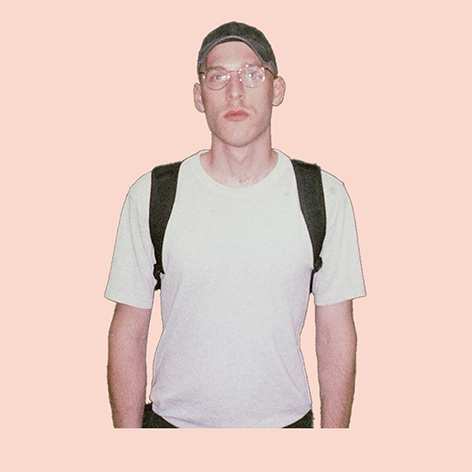
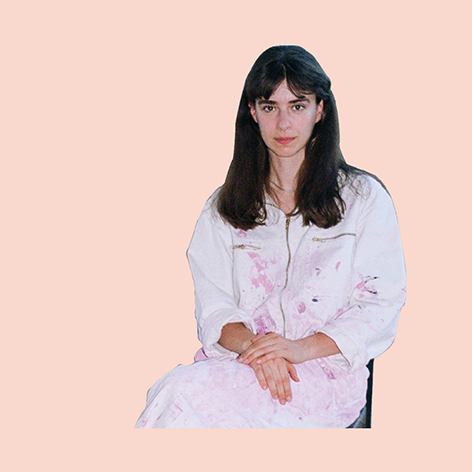 Pleun van Dijk - a speculative artist and designer fascinated by the constantly evolving world around her. The advancement of science and technology creates new opportunities and raises complex ethical questions. However, it is nearly impossible to predict the future impact of these inventions and the decisions we make about them.
Pleun van Dijk - a speculative artist and designer fascinated by the constantly evolving world around her. The advancement of science and technology creates new opportunities and raises complex ethical questions. However, it is nearly impossible to predict the future impact of these inventions and the decisions we make about them. 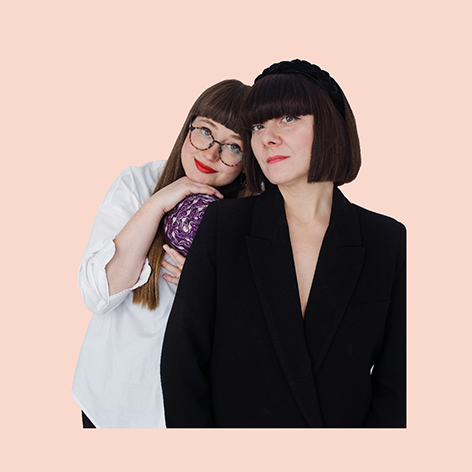 Slow Painting Studio - founded by Ola Ignasiak and Karolina Gębka combines art, sustainability and innovation, bringing audiences into a new era of colour.
Slow Painting Studio - founded by Ola Ignasiak and Karolina Gębka combines art, sustainability and innovation, bringing audiences into a new era of colour. 
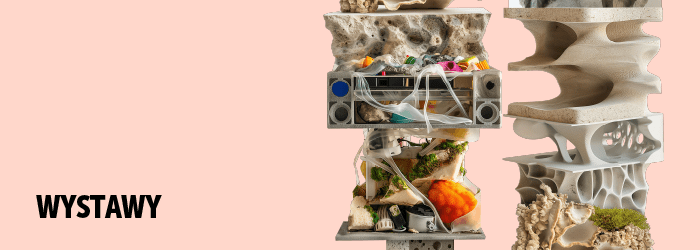


 Aleksandra Linkiewicz - this year's graduate of domestic design at the School of Form (SWPS University). Professionally, she works in computer graphics and new media. In her analogue works, she focuses on animals and senses, placing great emphasis on the materials she uses. When working, she tries to look at the world from the perspective of a person she is designing for. Her thesis, ‘Temporary shelter for animals in emergency situations’, highlights the challenges faced by pets and their owners in today's world.
Aleksandra Linkiewicz - this year's graduate of domestic design at the School of Form (SWPS University). Professionally, she works in computer graphics and new media. In her analogue works, she focuses on animals and senses, placing great emphasis on the materials she uses. When working, she tries to look at the world from the perspective of a person she is designing for. Her thesis, ‘Temporary shelter for animals in emergency situations’, highlights the challenges faced by pets and their owners in today's world. Bartosz Brylewski - a design artist, exhibition curator, and author of educational programmes that combine design with knowledge about materials and the environment. He graduated in industrial design at the School of Form (SWPS University). Since 2020, he has been developing his own design practice and cooperating with companies and institutions of culture, science, and art, including BWA Wrocław, the Institute of Design in Kielce, SWPS University, and the Museum of the Earth of the Polish Academy of Sciences.
Bartosz Brylewski - a design artist, exhibition curator, and author of educational programmes that combine design with knowledge about materials and the environment. He graduated in industrial design at the School of Form (SWPS University). Since 2020, he has been developing his own design practice and cooperating with companies and institutions of culture, science, and art, including BWA Wrocław, the Institute of Design in Kielce, SWPS University, and the Museum of the Earth of the Polish Academy of Sciences.  Dobromiła Grabiec - a graduate of industrial design at the School of Form (SWPS University). She currently works at Anna Bera Studio. She creates speculative, research-based works that are deeply sensitive to the surrounding world. She is interested in natural design, interspecies collaboration, traditional craftsmanship, and sentimentality. Her works have been presented at Polish and international exhibitions, including Vienna Design Week and Gdynia Design Days.
Dobromiła Grabiec - a graduate of industrial design at the School of Form (SWPS University). She currently works at Anna Bera Studio. She creates speculative, research-based works that are deeply sensitive to the surrounding world. She is interested in natural design, interspecies collaboration, traditional craftsmanship, and sentimentality. Her works have been presented at Polish and international exhibitions, including Vienna Design Week and Gdynia Design Days.  Julia Karnaś - a graduate of industrial design at the School of Form (SWPS University). In her work, she combines the challenges of climate change with social aspects. During a semester abroad in Iceland, she became interested in the radicalisation of materials in design and architecture. She is fascinated by modern digital techniques, process optimisation in design, and working with matter. Her works have been showcased at exhibitions such as ‘Nowa Generacja’ at Gdynia Design Days, ‘Laboratorium Współczesności’, and she was also a finalist in the ‘make me!’ competition at the Łódź Design Festival. After completing her bachelor's degree, she began working in Porto, where she continued her research on embodied and operational carbon.
Julia Karnaś - a graduate of industrial design at the School of Form (SWPS University). In her work, she combines the challenges of climate change with social aspects. During a semester abroad in Iceland, she became interested in the radicalisation of materials in design and architecture. She is fascinated by modern digital techniques, process optimisation in design, and working with matter. Her works have been showcased at exhibitions such as ‘Nowa Generacja’ at Gdynia Design Days, ‘Laboratorium Współczesności’, and she was also a finalist in the ‘make me!’ competition at the Łódź Design Festival. After completing her bachelor's degree, she began working in Porto, where she continued her research on embodied and operational carbon.  Justyna Parjaszewska - a graduate of the Faculty of Design at the School of Form (SWPS University). She has begun her master's studies at the IED Istituto Europeo di Design in the jewellery department. For her, creative processes are not only a challenge but, above all, an inspiring journey. Sensitivity to spaces and the unique properties of materials are key elements of her creativity. She dives into the world of forms, textures, and colours to create designs that are not only an aesthetic reflection of her impressions, but also show a deep understanding and respect for the world around us.
Justyna Parjaszewska - a graduate of the Faculty of Design at the School of Form (SWPS University). She has begun her master's studies at the IED Istituto Europeo di Design in the jewellery department. For her, creative processes are not only a challenge but, above all, an inspiring journey. Sensitivity to spaces and the unique properties of materials are key elements of her creativity. She dives into the world of forms, textures, and colours to create designs that are not only an aesthetic reflection of her impressions, but also show a deep understanding and respect for the world around us.  Sergey Moskalev - a designer, craftsman, and experimenter. He works in Poznań, and creates bicycles under the Volna Bicycles brand. With experience in graphic and industrial design, he creates his own products, restores vintage American bicycles, and experiments in the fields of modern design and technology. Through well-designed objects and processes, he combines proven technical solutions and traditional aesthetics with a modern approach to finding balance and sustainability in life. He opts for actions aligned with the ideology of slow living, being eco-friendly, and taking creative approaches.
Sergey Moskalev - a designer, craftsman, and experimenter. He works in Poznań, and creates bicycles under the Volna Bicycles brand. With experience in graphic and industrial design, he creates his own products, restores vintage American bicycles, and experiments in the fields of modern design and technology. Through well-designed objects and processes, he combines proven technical solutions and traditional aesthetics with a modern approach to finding balance and sustainability in life. He opts for actions aligned with the ideology of slow living, being eco-friendly, and taking creative approaches.  Stefan Lazar - he gained his professional experience at the Faculty of Graphic Design at the College of Art in Ukraine, followed by the domestic/industrial design course at the School of Form (SWPS University). His works were presented at the Łódź Design Days and Gdynia Design Days (The OPO Project). For the last 5 years, he has realised innovative projects for clients and led the technical team in the Lab150 prototyping room. Working with Paweł Buszko, he designs products from their concept to market launch. With his technical experience, his design projects incorporate technological and manufacturing aspects, combining functionality with simple forms.
Stefan Lazar - he gained his professional experience at the Faculty of Graphic Design at the College of Art in Ukraine, followed by the domestic/industrial design course at the School of Form (SWPS University). His works were presented at the Łódź Design Days and Gdynia Design Days (The OPO Project). For the last 5 years, he has realised innovative projects for clients and led the technical team in the Lab150 prototyping room. Working with Paweł Buszko, he designs products from their concept to market launch. With his technical experience, his design projects incorporate technological and manufacturing aspects, combining functionality with simple forms.  Wit Kacper Bojar - a graduate in design at the School of Form (SWPS University). He specialises in working with porcelain, clay, and wood. His creations are inspired by the deep relationship between humans and nature, which is reflected in his unique projects that combine aesthetics with functionality. He is also passionate about cooking, which can be seen in the unique everyday objects he designs that reference culinary themes. He is constantly looking for new forms of expression and explores a variety of materials and techniques to create pieces that harmonise with the surrounding world.
Wit Kacper Bojar - a graduate in design at the School of Form (SWPS University). He specialises in working with porcelain, clay, and wood. His creations are inspired by the deep relationship between humans and nature, which is reflected in his unique projects that combine aesthetics with functionality. He is also passionate about cooking, which can be seen in the unique everyday objects he designs that reference culinary themes. He is constantly looking for new forms of expression and explores a variety of materials and techniques to create pieces that harmonise with the surrounding world.  Zofia Zdanowicz - a visual artist and a graduate in design at the School of Form (SWPS University). She utilises various media, specialising in porcelain, clay, dyeing, fabric, and wood. Her works focus on themes related to the relationship between humans and nature, emotions, human memory, handcraft, and craftsmanship. By analysing the impact of objects and designed spaces on the viewer, she explores the connections between form and meaning. Combining different means of expression allows her to create works that are a personal expression of the artist, harmonising form and content, while encouraging interaction and reflection.
Zofia Zdanowicz - a visual artist and a graduate in design at the School of Form (SWPS University). She utilises various media, specialising in porcelain, clay, dyeing, fabric, and wood. Her works focus on themes related to the relationship between humans and nature, emotions, human memory, handcraft, and craftsmanship. By analysing the impact of objects and designed spaces on the viewer, she explores the connections between form and meaning. Combining different means of expression allows her to create works that are a personal expression of the artist, harmonising form and content, while encouraging interaction and reflection.  Zuzanna Hofman - graduated with distinction in design at the School of Form (SWPS University). During her studies, she worked at the MUAS ceramics workshop. She has participated in many exhibitions, including Łódź Design Days, Gdynia Design Week, and Vienna Design Week. In her designs, she is most interested in working with nature. She creates sustainable works that support climate protection and aims to teach people sensitivity and respect for the natural world around us. Her passion is travelling, and it is during travel that she gets most of her inspiration.
Zuzanna Hofman - graduated with distinction in design at the School of Form (SWPS University). During her studies, she worked at the MUAS ceramics workshop. She has participated in many exhibitions, including Łódź Design Days, Gdynia Design Week, and Vienna Design Week. In her designs, she is most interested in working with nature. She creates sustainable works that support climate protection and aims to teach people sensitivity and respect for the natural world around us. Her passion is travelling, and it is during travel that she gets most of her inspiration. 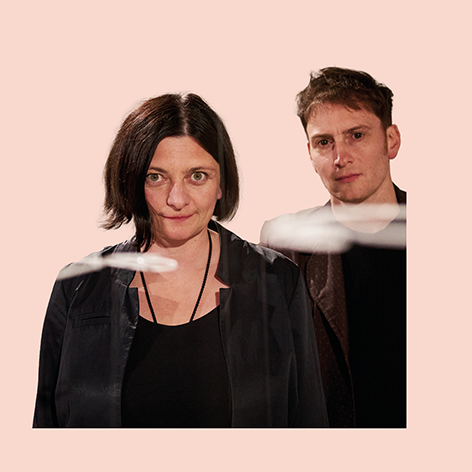 CENTRALA - Małgorzata Kuciewicz and Simone De Iacobis create projects under the motto ‘Amplification of Nature’, based on the study of the relationship between architecture and natural processes. For them, architecture is a kind of movement, not just a static form, and gravity, water circulation, and atmospheric or astronomical phenomena are its building blocks. In architecture that connects the intimate, human scale with the planetary scale, they see a tool that helps us attune to the rhythm of the surrounding world, enhances our sense of connection with nature, opens us up to experiencing its disappearing cycles, and directs attention to the relationship between micro-events and transformations occurring on a global scale.
CENTRALA - Małgorzata Kuciewicz and Simone De Iacobis create projects under the motto ‘Amplification of Nature’, based on the study of the relationship between architecture and natural processes. For them, architecture is a kind of movement, not just a static form, and gravity, water circulation, and atmospheric or astronomical phenomena are its building blocks. In architecture that connects the intimate, human scale with the planetary scale, they see a tool that helps us attune to the rhythm of the surrounding world, enhances our sense of connection with nature, opens us up to experiencing its disappearing cycles, and directs attention to the relationship between micro-events and transformations occurring on a global scale. 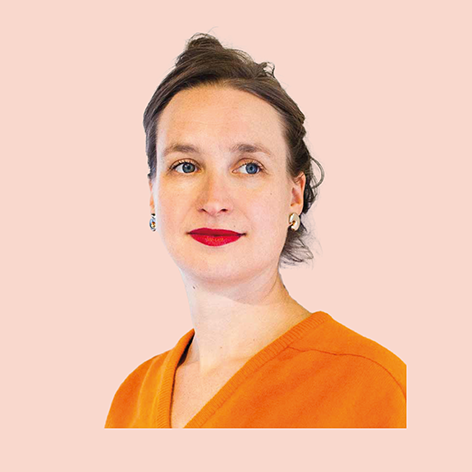 Alicja Bielawska - a visual artist who creates drawings, sculptures, and installations. Her works focus on the physical sphere of everyday life and the relationship between objects, interiors, and memories. She addresses the issues of the relativity of perception and the role of memory. She is interested in the shaping of space, the context in which she places her works, and the role of the viewer. She also incorporates elements of choreography into her projects.
Alicja Bielawska - a visual artist who creates drawings, sculptures, and installations. Her works focus on the physical sphere of everyday life and the relationship between objects, interiors, and memories. She addresses the issues of the relativity of perception and the role of memory. She is interested in the shaping of space, the context in which she places her works, and the role of the viewer. She also incorporates elements of choreography into her projects.  Nienke Hoogvliet - refers to herself as an ‘artivist’, derived from a combination of the words artist and activist. She uses design to create harmony between people, communities, and the environment.
Nienke Hoogvliet - refers to herself as an ‘artivist’, derived from a combination of the words artist and activist. She uses design to create harmony between people, communities, and the environment. 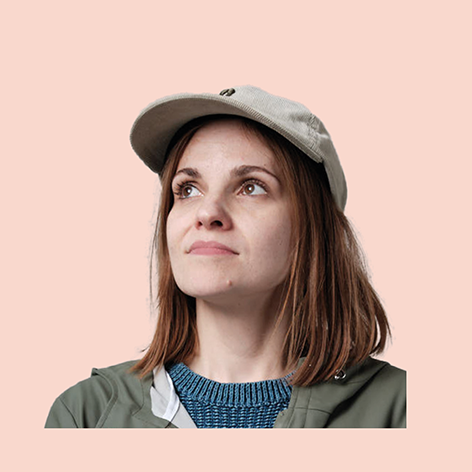 Karolina Ferenc - a designer and storyteller. Graduate of Design Academy Eindhoven and scholarship holder of Akademie Schloss Solitude. Her works have been exhibited, among others, at Dutch Design Week and Berlin Design Week. She is currently affiliated with Wise Habit, where she directs research and design activities, runs the first Library of Sustainable Materials in Poland and organises the ‘Designing for the Future’ debate series. In 2024, she received the IF Award for Wise Kitchen, designed for Wise Habit. Her work is based on empathy and horizontality, avoiding dystopian and apocalyptic visions of the future.
Karolina Ferenc - a designer and storyteller. Graduate of Design Academy Eindhoven and scholarship holder of Akademie Schloss Solitude. Her works have been exhibited, among others, at Dutch Design Week and Berlin Design Week. She is currently affiliated with Wise Habit, where she directs research and design activities, runs the first Library of Sustainable Materials in Poland and organises the ‘Designing for the Future’ debate series. In 2024, she received the IF Award for Wise Kitchen, designed for Wise Habit. Her work is based on empathy and horizontality, avoiding dystopian and apocalyptic visions of the future.